Diabetes in dogs is divided into two categories: the ones that will need insulin injections and the ones that can manage their sugar levels with oral medication and a balanced diet only.
If your dog requires insulin injections, here is a proper way to do that.
How To Give Your Diabetic Dog Injections

Here is how to give your diabetic dog injections:
When to give the insulin shot
You need to give your diabetic dog insulin injections should be done one hour after eating. The reason why you should wait one hour is that the foods need to digest and release the sugar into their bloodstream before you inject them with insulin to move the sugar to the cells which give them energy.
VERY IMPORTANT: The insulin injections should be given to dogs every 12 hours without being late or early. This means that the dog should eat one hour before, every day, at the same time.
Wash your hands

Washing your hands with lukewarm water before administering insulin to your diabetic dog is very important. You should always wash your hands before and after to keep germs away from your dog as well as any leftover insulin on the syringe from getting on your hands.
Get the insulin
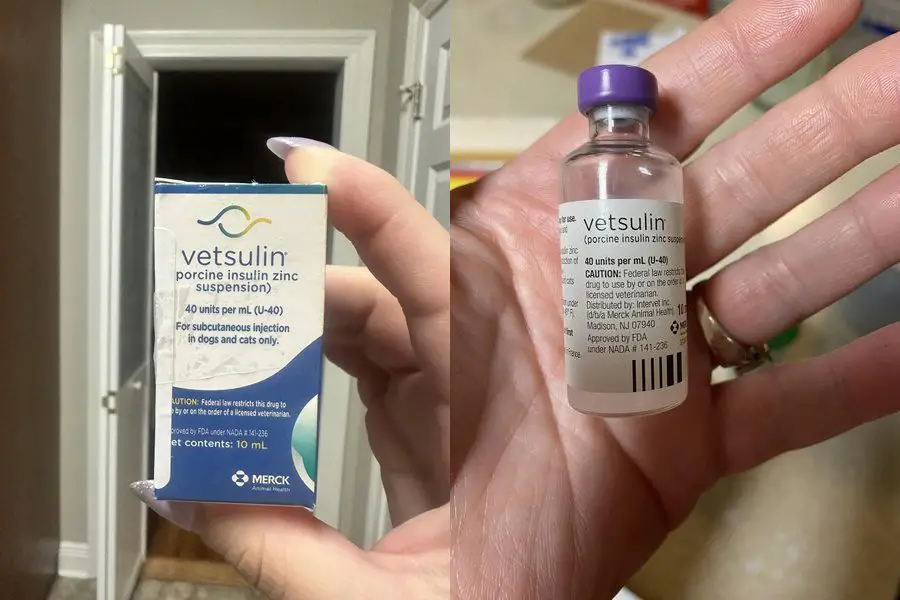
Gather the dog’s insulin from the fridge and gently rock the bottle a few times.
The insulin should be stored in a fridge at all times. The only time the insulin should be out of the fridge is when you are about to use it.
Insert the syringe into the bottle
Carefully insert the needle of the syringe into the rubber top of an insulin bottle and keep them both upright. The rubber top of the insulin bottle prevents the insulin from leaking out. Just make sure that you are not moving the needle around too much.
Draw the required insulin dosage
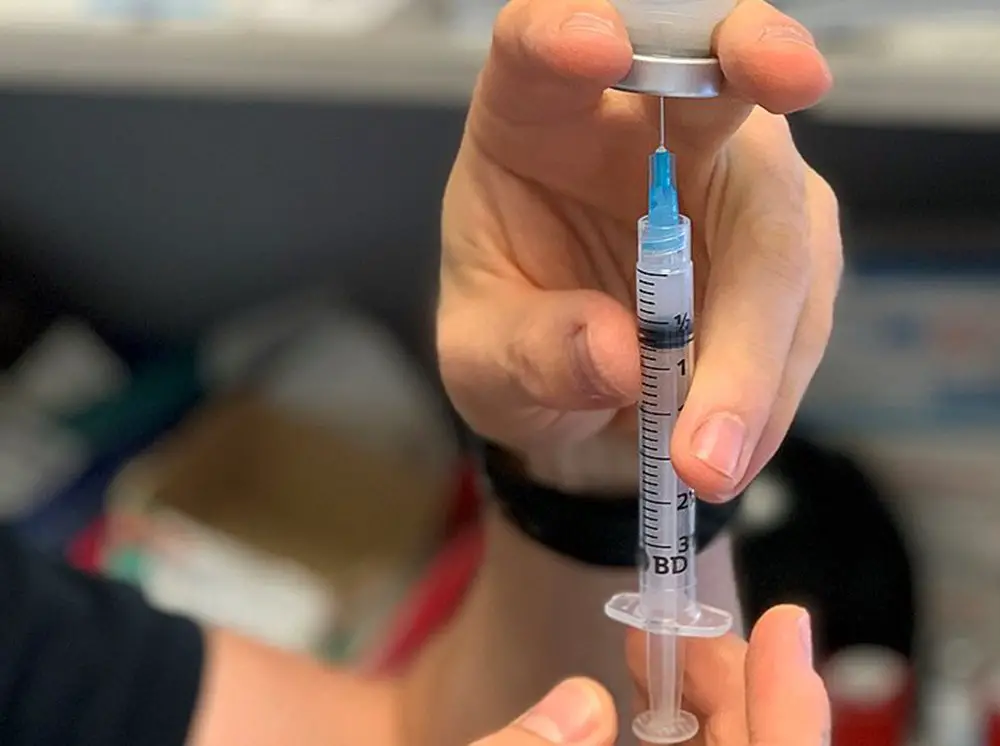
Draw back the plunger so that you have slightly more units than what your pet requires. For instance, if they require five, draw up seven. The required dosage will be determined by your veterinarian and you should always administer that amount.
Get rid of the air
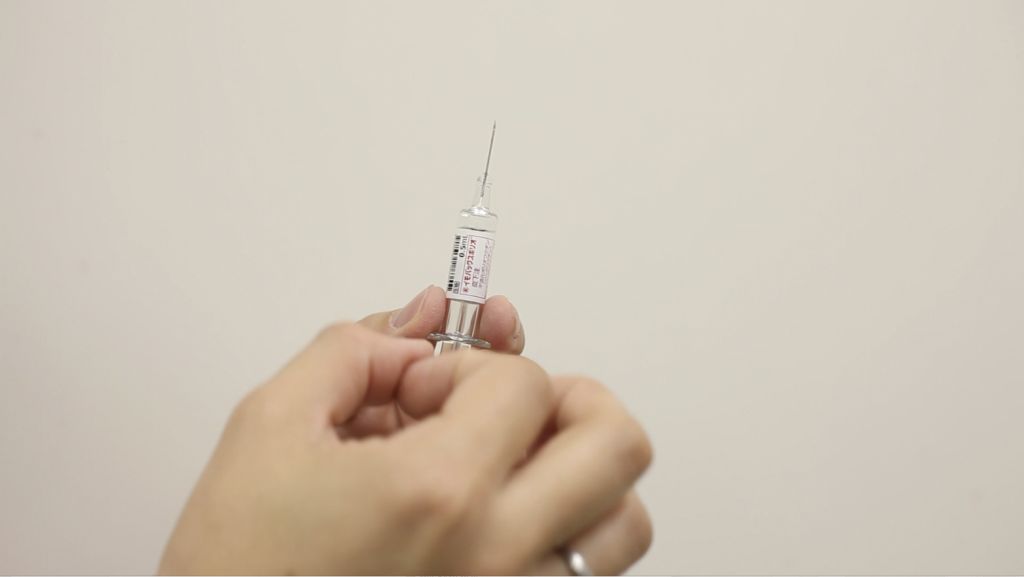
Hold the syringe in an upward position to get rid of the air.
Gently tap the sides of the syringe with your finger to ensure any air bubbles travel up toward the needle end.
Insert the extra insulin back into the bottle
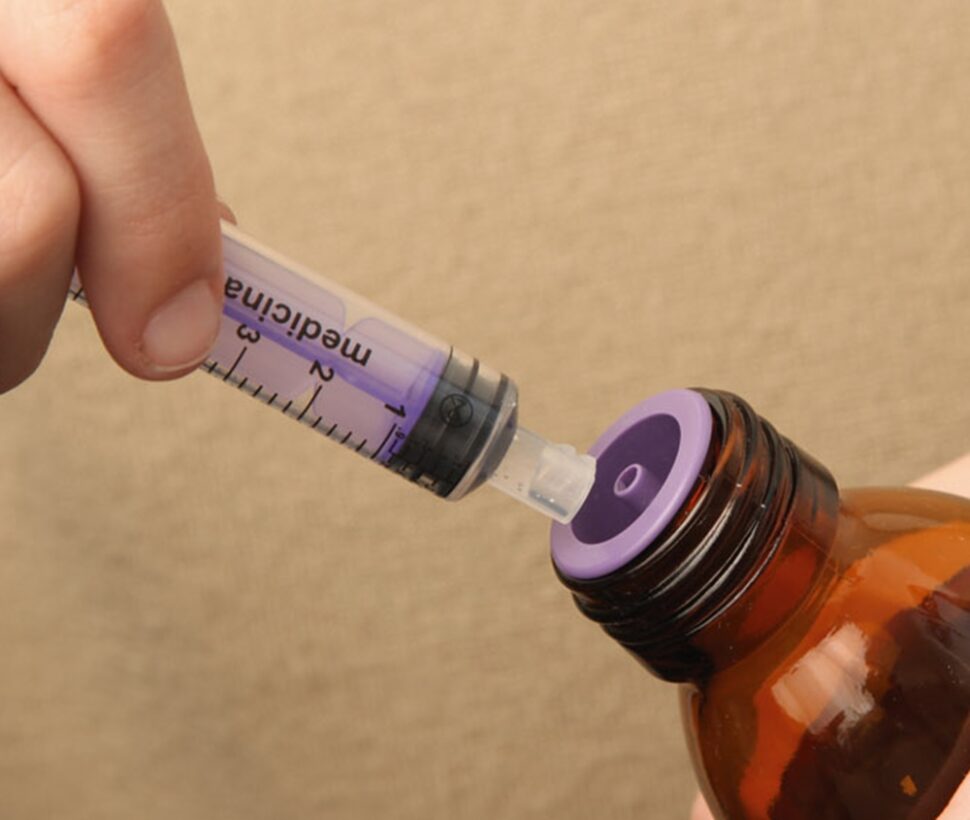
Carefully push the plunger down on your pet’s syringe to eliminate any bubbles. Make sure that the top of the black part of the plunger aligns with how many units they require.
If there are not quite enough needles in the syringe, repeat this process of drawing more into it and clearing away any air bubbles.
Carefully withdraw the syringe from its bottle.
Hold your pet and make sure they are calm
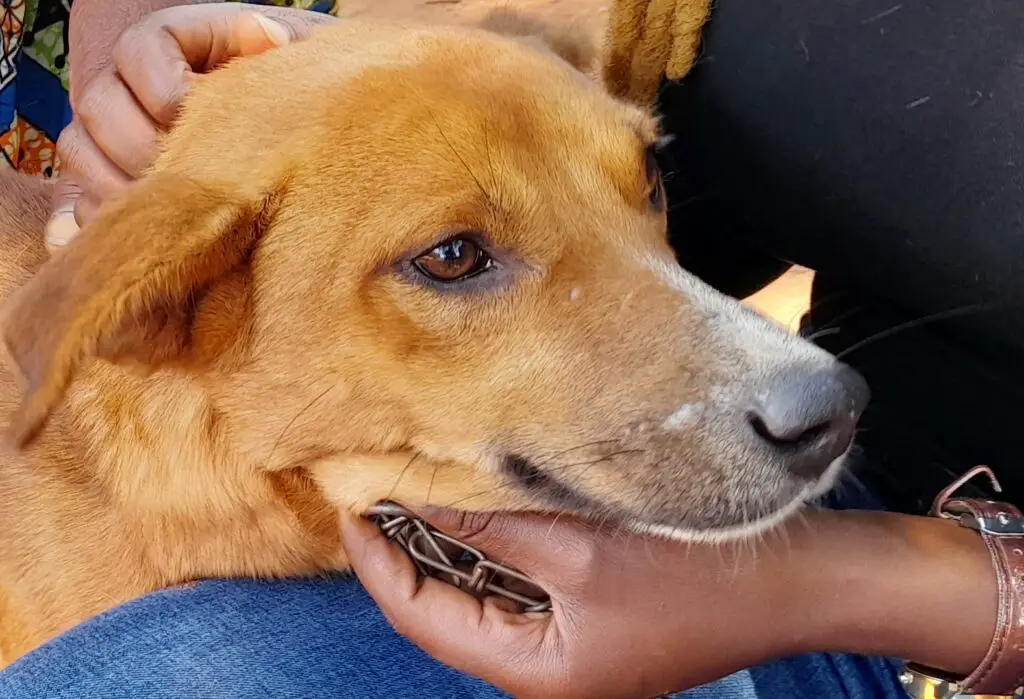
If you have someone to help, ask them to gently hold your dog or even just put a hand on them and stroke them. The process of injecting insulin in dogs is not painful.
However, your dog might see that you are nervous and waving around with a needle and they could get upset too.
Inject the insulin into the scruff
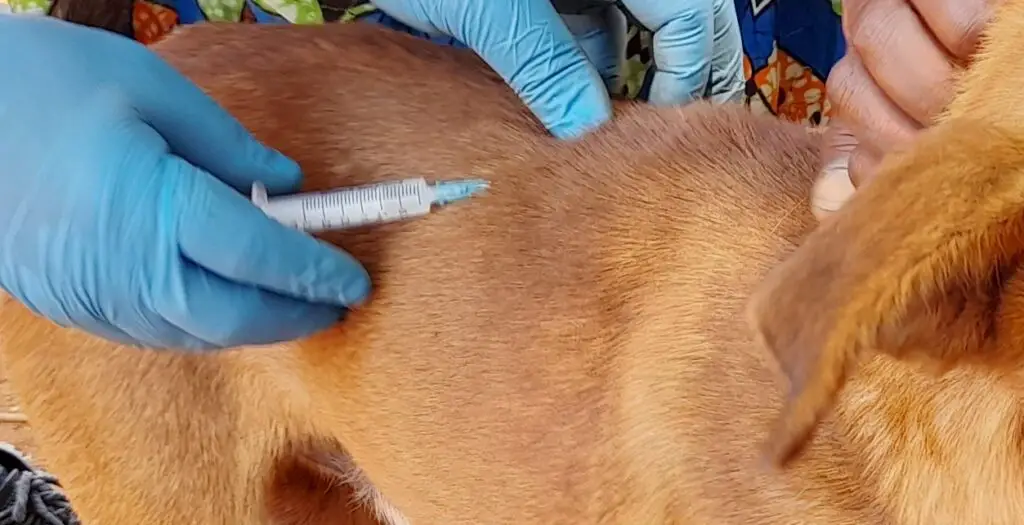
Gently gather the scruff at the back of your dog’s neck. Your vet may have clipped an area to indicate where injections should be given. Later on, you will change the location of the injection site to avoid any skin thickening.
Gently place the needle beneath the skin all the way in.
Draw back the plunger before injecting. This may take some practice as holding the syringe properly may feel unfamiliar at first.
If you notice blood in the syringe after drawing back, don’t panic – but also don’t push the plunger too hard as this could indicate that you have entered a small blood vessel.
Remove the needle and the syringe from your pet and discard them.
You must start over with a new syringe and needle.
If there is no blood when you draw back, press down on the plunger and inject insulin into your pet.
Once complete, carefully remove the needle and discard it.
Rub the area
After injecting, you may gently rub the area.
After administering their injection, reward your pup with something they enjoy – perhaps some extra attention or a toy.
By giving them praise after the injections, you’re hopefully helping them associate the injections with a positive part of their day.
Treats shouldn’t be given because they could raise blood sugar levels too quickly – which could prove hazardous.
Once you become comfortable with the injection process, switch up the injection site so that your skin does not become too thick in one area over time. For instance, you could inject over your shoulders or lower back.
How Do You Give a Difficult Dog An Insulin Shot?
Giving an insulin shot to a difficult dog can be intimidating, but it’s essential that you remain calm and in control.
If possible, having someone else help you out makes the task much simpler.
To ensure your pup stays calm, handle them gently and avoid any sudden movements that could cause panic or distress.
However, if there’s any chance they might bite you, put on a muzzle for extra protection.
Make sure the area where you will inject them with insulin is clean, as well as both of your hands.
Once ready, slowly approach your dog from their side so they don’t feel threatened by your presence, and hold onto them firmly so they cannot move away from the injection site.
Quickly insert the needle into their scuffle and praise them while doing so.
There isn’t really a way to give a difficult dog an insulin shot. But, you have to keep in mind that you are doing this for their own good and you need to go through it.
(Related: How To Monitor Your Dog’s Blood Sugar [The Proper Way])
In Conclusion
Giving your dog an insulin shot has to be done every 12 hours, exactly at the same time. The dog has to eat first and then receive an insulin shot. This also goes for the meals. Make sure they are eating at the same time, every day.
It might take a while for you to get used to administering injections. However, keep in mind that you should always wash your hands, keep the insulin in the fridge, and after a while, change the injection further lower on the back, left or right side.





Leave a Reply